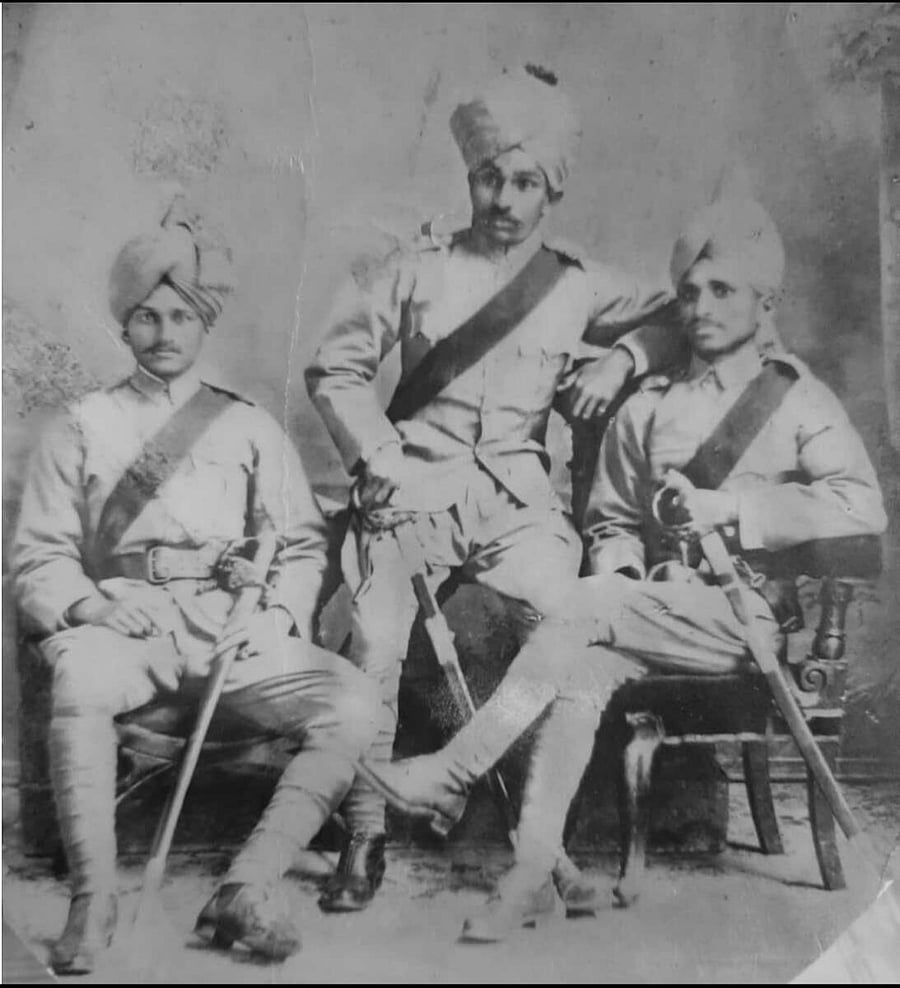

During the times of the Rajas, writing was not popular among the Kodavas of Kodagu, who were paddy farmers and cattle herdsmen.
In the absence of literature, the region was rich in oral folklore. A song was sung for every occasion — songs were sung during the annual village festival and during the harvest festival Puththari. Songs were sung for weddings and funerals. Four singers would carry small hourglass drums called dudi and beat them with small, curved sticks. These rustic songs often had the same rhythm.
The compiler
A key force in chronicling these oral traditions was Nadikerianda Chinnappa. Chinappa was born in 1875 in Karada village.
In 1899, he joined the revenue department and wrote an English poem “My position as Shanbhog”. In 1900, he became a Revenue Inspector. In 1902, he joined the Indian Army’s Coorg Regiment and became a Subedar Major. Two years later, the regiment was disbanded and he joined the police department.
After his training from Vellore, he became an SI in Kushalnagar. Thereafter, he was transferred to Napok, Srimangala and Virajpet until he was made prosecuting inspector in Madikeri.
In 1917, he created a Kodava prayer called ‘Sri Moola Kanniye’, addressed to ‘the first maiden’ or Parvathi who was incarnated as Kaveri. This came to be known as the Kodava anthem. He also composed a Kannada poem in honour of the deity of Chomamale hill, Somagiri Deva.
During his free time, he would ride through the countryside on horseback. He would visit folk singers and every time he heard an interesting song, he would bring the singer home. His wife would cook food for the singer, while Chinnappa would offer him toddy. The singer would beat the dudi and sing the song while Chinnappa wrote it down.
By 1922, he had extensively collected several folk songs which were sung during various ceremonies and festivals such as the Kaveri Song, the Wedding Song, the Funeral Song and the Puththari Harvest Song, along with 750 proverbs and idioms.
The folk songs were divided into categories based on when they were sung or in praise of whom they were sung — customs and ceremonies, festivals, heroes and deities. He published a compilation, titled ‘Pattole Palame’ in 1924. The Pattole Palame is one of the earliest compilations of folklore in India.
The name Pattole Palame was originally used for old palm-leaf records kept by astrologers in Kodagu. It comes from the words ‘patt-ole’ (silk leaves) ‘palame’ (lore), meaning oral traditions recorded on palm leaves, which were like silk.
Between 1894 and 1928, G A Grierson, a civil servant, conducted the Linguistic Survey of India. A knowledgeable speaker was invited from every known Indian language. The person had to narrate a translated biblical parable and either sing a song or narrate a story in the language.
In 1922, Chinnappa was recorded narrating the ‘Prodigal Son’ in Kodava language. He also sang his own composition, 'Sri Moola Kanniye'. These gramophone recordings were sent to the British Library’s Sound Archives and the Madras Museum.
The language was recorded as ‘Kodaga’ and wrongly identified as being from Madras. The narrator was uncredited and the song was called ‘Coorg national anthem: Swadesi priya kirtane’. It was in the 1970s that Chinnappa’s voice was identified by his son Subbayya when he listened to the Madras Museum recording.
In 1929, Chinnappa translated the Bhagwat Gita into Kodava and called it ‘Bhagvathanda paat’. Krishna was called by his Kodava name Kuttappa in this book.
The translators
Chinappa’s legacy has been kept alive by his descendants, including his grandson Boverianda Muthanna Chinnappa, fondly nicknamed Bobjee. After working as an engineer in India and various countries abroad, Boverianda Chinnappa became an entrepreneur in Canada. He married his cousin Nadikerianda Nanjamma, another grandchild of Nadikerianda Chinnappa.
Nanjamma worked as a statistician and taught statistics in India and Canada. She co-authored a book on Business Survey Methods. In 1993, she was elected a fellow of the American Statistical Association.
After their retirement, Boverianda Chinnappa and Nanjamma returned to India. Their translation of Pattole Palame into English was published in 2003. Nanjamma’s brother renowned cartoonist N Ponnappa illustrated the cover of the book.
The couple visited nearly 1,720 clans in Kodagu over the years to research ainmanes. Their work was compiled into a book called ‘Ainmanes of Kodagu’ and an online website.
In 2006, Nanjamma received a Mangalore University honorary doctorate from the Governor of Karnataka. That same year, she won the ‘Coorg Person of the Year’ award.
Boverianda Chinnappa passed away on March 10 this year. He is survived by his wife, two daughters and their families.